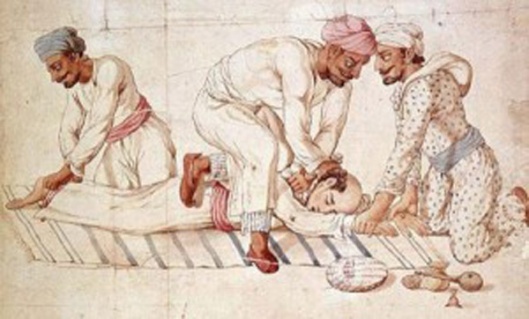 | ||||||
Was the Thuggee really a scarf wielding religious cult?Thuggee cult of stranglers, media frenzy and modern day terrorism? |
The “thuggees”, (or as we say, “thugs”), were a fanatical religious group in India who were infamous for their ritualistic assassinations, so the story goes. Or were they the product of a scared British imagination?
The legend of the Thuggee, or deceivers, excited the British public spread thanks to Dr.
Richard Sherwood and Colonel William Sleeman, later renowned as
“Thuggee Sleeman.” Were they really a cult that traced back to the time
of Tartars? Or an exaggeration of British imagination, perhaps even no
more than disaffected mercenaries, out of a job as zarmindar armies fell
to Britain?
In 1799 it seems about 100 were apprehended near Bangalore. Thuggee stories first appeared in Sherwoods report for Madras Literary Gazette in 1816. Dr. Sherwood was report of the Phansigars, from the word Phansi, Hindi for noose , so inspired British imagination that was one of the colonial eras most read accounts[1].
The Phansigars were, said the British, both a religious sect, and “villains as subtle, rapacious and cruel as any who are to be met with in the records of human depravity.” They were protected by Polygars (Indian chiefs) and local rulers who took a cut. Groups of ten to 50 were mostly Muslim, with Rajput Hindus and rare few Brahmins devoted to Kali, addicted to opium and guided by omens (Bruce 1968,13–26).
Scouts would identify wealthy travellers and “skilled in the arts of deception” when their target was most relaxed, a signal, reportedly “Bring the tobacco”, strangle their victim from behind with a scarf, robbed and the body buried, face down identifying facial features mangled.
Sounds pretty bad doesn’t it? And it was there chief adversary that excited the legend.
After serving in Nepal from 1814 to 1816, Colonel William “Thugee” Sleeman requested to transfer to Civil Service to investigate the Phansigars. Sleeman described “a numerous and highly organized fraternity operating in all parts of India.”
There were, and still are, opportunist dacoits, or bandits. During Colonial rule, the Thuggee was accused by the British for over a million murders in India. However, what perhaps shocked, perhaps even terrified, the puritanical British was the link of Kali to Tantra, which incorrectly seemed to link it to unbridled passions, much as contemporary Bible scholars described the sexual excesses and human sacrifices of Canaanites to Molech.
Sleeman “believed that India was under attack—that the foundation of human society was in danger of being destroyed. . . . He recognized Thuggee as instruments of the ultimate evil in their day, of that which as an end in itself takes human life indiscriminately. He was inspired by the belief that Thuggee must be destroyed.”
With so much fiction amongst the facts the truth is harder to determine.
The “Oriental” was characterised mysterious, backward, degenerate, irrational and inferior. The latter novelist John Masters would contrasts Britain’s “impersonal rule of law” to India religious chaos allowed a “million murders” go undetected.
“Intense devotion to Kalee is the mysterious link that unites them in a bond of brotherhood that is indissoluble; and with secrecy which for generations has eluded the efforts of successive governments to detect them.”From 1831–32, Sleeman extensively widened their search from Bundelkand and western Malwa to the whole subcontinent: “From the foot of the Himalayas to Cape Comorin, from Cutch to Assam, there was hardly a province . . . where Thuggee had not been practiced.”
Rev. Alexander Duff, India and Indian Missions (1839)
Suddenly every petty criminal, highway thief or river pirate was a “Thuggee Menace”.
Reports, rumours, and confessions led to the publication of Ramaseeana; or, A Vocabulary of the Peculiar Language Used by the Thugs.
One leader called Feringhea, “the prince of thugs,” confessed the secrets of the cult, which were “so incredible that at first Sleeman would not believe them.”
It was proof of India’s evil heart, and the need of Christian civilisation to tame it. The secret “Thuggee Menace” could be traced to the Tartars and Moghal’s.
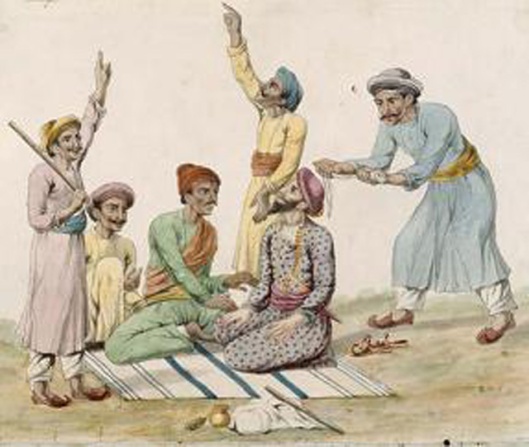
“The most astounding fact about the Thug is that . . . he was a good citizen and model husband devoted to his family and scrupulously straight when not on his expeditions, presenting a complexity of character utterly baffling to a student of psychology. It was essential to the safety of their criminal operations that they should pass as peaceful citizens. . . . Not only had they left no trace behind of their foul deed, but they concealed their trail by every art and craft, and with ill-gotten rupees bribed officials, policeand villagers, in whose territory the murders had occurred. . . . It is not extraordinary that Thuggee remained a mystery; rather it is remarkable that it was ever brought to light”Soon a myth spread with Sir Edward Thorntons 1837 accounts of Thuggee persecution and the popularthree volume crime novel, The Confessions of a Thug (1839), by Philip Meadows Taylor.
– William Sleeman
According to Alexander Lyon Macfie (208: 385), Taylor based his story in part at least on the confessions of an actual thug, Sayyid Amir Ali, recorded in Sagar in 1832. Quoting van Woerkens obervation that the novel makes “a split is made between ‘the West, the self, harbinger of the future; and the Orient, the other, the elsewhere, the blight of the past in the present’ (van Woerkens 2002, 248). At the same time, in order to further entrap the oriental narrative in a web of European perception, many of the chapters are introduced by epigraphs, taken for the most part from Shakespeare’s plays (Richard III, Macbeth, As You like It, King Lear, Othello) and other mainly European works. In this way the moral authority of the European self is generally (but by no means always) maintained over Ameer Ali, the sometimes noble, brave, sympathetic, but ultimately barbaric and mysterious other.”
MacFie (2008: 385) notes it is possible that Meadows Taylor was more sympathetic than his fellows.
“Mary Poovey, in ‘Ambiguity and Historicism: Interpreting Confessions of a Thug’ (2004), on the other hand, suggests that it is possible to read the novel not as a justification of British imperialism but as an oblique critique of the East India Company and everything it represented: assumptions about the racial superiority of the English, the conviction that Christianity is morally superior to various Indian religions, and the belief that western bureaucracy is more efficient and rational than its eastern counterpart.”
Meadows Taylor, was as a “heavily acculturated Anglo-Indian – Meadows Taylor’s wife was half Indian and according to a visiting friend he ruled in Shorapur like a nabob, enjoying all the pleasures of a well-stocked harem – was able to observe both the Indians and the British more objectively than most of his friends and colleagues, and was therefore the better able to appreciate the virtues and failings of both.”
Whatever Meadows Taylor intent, he was the legends chief publicist. The Thuggee was proof the most decent Indian could not be trusted! India, need strict colonial rule.
Another novel, Les E ´ trangleurs de l’Inde, by Me´ry, a French novelist, referred to the thugs as monsters unrelated to the human race. They ‘to have been issued from the mating of hyenas and baboons’ (Me´ry 1859, 30, cited in van Woerkens 2002, 263–4).
“These common enemies of mankind, under the sanction of religious rites, have made every road between the Jumna and Indus rivers . . . a dreadful scene of lonely murder,” Sleeman lamented, concluding that “we must have more efficient police establishments along the high roads . . . to root out entirely this growing evil which has been . . . increasing under the sanction of religious rites.”Britain claimed India had fallen into moral decay as the Mughals declined. Criminal gangs and decadent Rajas had left India ravaged and exhausted, strewn with “sacked palaces, vanishing roads, toppled fortresses . . . and ruined towns.” “[G]overnment had ceased to exist; there remained only oppression and misery.”
“The Thuggee was proof of the worst possible corruption. Hence, local authority was overruled by the British who formed special courts over all of India. Agent to the Governor-General F. C. Smith argued, “no Thug should . . . be made over to a native Chieftain for punishment, experience having shown their utter incapacity to put them down and expose their corrupt practices of concealing Thugs for valuable considerations.”In 1836 a member of a Thuggee gang could be tried in any Company court even beyond its area of jurisdiction and without any form of Islamic law. Evidence could be used that would not hold up in a regular court.
There was a Department of Thuggee later merged into the Criminal Intelligence Department.
Britain claimed it had contained a disease that had been ravaging India for hundreds of years: “Those were the days when British rule in the East was synonymous with courage, strength and justice. . . . [T]he Indian had faith in British government and learned to respect it.”
Sleeman was seen as hero and his work the most “fitting monument to British rule.”
Figures don’t lie
If a million men had died as part of an Indian wide cult then why, Anuraag Sanghi asks “did the ‘Thuggee and Dacoity Department’ with William Sleeman as Superintendent in 1835, could capture no more than 3,000 highway robbers – of which only 400 were executed. Based mostly on the ‘identification’ by a few ‘hand-picked’ witnesses – from a bank of nearly 500 ‘approvers.’ In nearly a decade! In a population of possibly 25 crores.3,000 ‘thugs’ in a nation of 25 crores? Assuming that all the 3,000 accused ‘thugs’, were ‘guilty’, going by modern imprisonment standards, it remains low.Writing in 2011 he notes “in modern Britain, there are nearly 17,000 prisoners for violent crime, in a population of little over, 6 crores (60 million). 3 people per thousand in Britain are criminally violent and in prison. … In fact is India was not a criminal society then – and not one today.. India today has the world’s lowest police-to-population ratio – and the lowest prisoners-to-population ratio.”
The bloodied Image of Kali
The bloodied image of Kali to the outsider is frightening, Mixed with the legend of the Thuggee it would justifiably frighten a genteel Engrezi.As retold by the British Kali took the form of Bhowani in order to kill the demon Rukt Bij-dana, every drop of blood from this demon sprouted more. Creating two men from the sweat of her armpits she commanded them to strangle the demons with a ruman or handkerchief. She then established the cult of the Thuggee, to feed on the victims, but when watched eating a copse she decided to give the thuggee a sacred pickax to bury the victims of their dark ritual.
A ritual that the British a blood sacrifice of wine and meat was similar to a witches Black Mass.
A silver or brazen image of the goddess . . . together with the implements of Phansigari, such as a noose, knife and pick axe, being placed together, flowers were scattered over them and offerings of fruit, cakes, spirits, &c.are made. . . . The head of the sheep being cut off, it is placed with a burning lamp upon it . . . before the image . . . and the goddess is entreated to reveal to them whether she approves of the expedition.Proof, in the British mind, of the demonic Kali’s influence, of hypnotic power, fusing sexual license and political violence. The extreme example of the dark Indian heart of the natural tendency toward lawlessness, perversion, and a murderous instinct.
A ritual feast . . . took place after every murder, sometimes upon the grave of the victim. The goor or coarse sugar took the place of the Christian communion bread and wine. (Hugh B Urbanm, from Tantra: Sex, Secrecy, Politics and Power in the Study of Religion, p. 83).
They go there to offer up in person a share of the booty they have acquired from the victims strangled in their annual excursions. The priests of this temple know perfectly well the sources from which they derive their offerings and wealth, and the motives from which they are made. They suggest expeditions and promise the murderers in the name of their mistress immunity, provided a due share be offered up to their shrine and none of the rites and ceremonies be neglected. If they die by the sword in the execution of these murderous duties by the goddess assigned or sanctioned, she promises them paradise in its most exquisite delights, but if they are taken and executed it must arise from her displeasure, incurred by some neglect of the duties they owe her, and they must, as disturbed spirits, inhabit mid-air until her wrath be appeased. After they have propitiated the goddess by offering up a share of the booty of the preceding year and received the priests’ suggestions on the subject, they prepare for the following year.
Thuggee is an organised system of religious and civil polity prepared to receive converts from all religions and sects and to urge them to the murder of their fellow creatures under the assurance of high rewards in this world and the next (Bruce 1968, 81–3,)
The historical verdict?
The Colonial period historians accepted the authenticity of the British of Thuggee archive, admitting it had its orientalist biases. Post Colonial, mainly Indian, historians began to critique against their erstwhile imperial masters for a constructing their own political view of the past. As the 20th century ended a third group have found balance between competing views of the facts.I recently discussed Sleeman with a Director General of Police in India well versed in military history. He claimed Sleeman did a remarkable job in defeating a criminal element. The village of Sleemanabad, Madhya Pradesh, remains in his honour. But religion and crime are separate things. There is no religious injunctions to murder in the name of Kali. However, in India everyone calls on a god to power their profession.
Though based on actual criminal activity, there seems little evidence of a exclusive ancient religious caste with violence as their ‘natural pastime.” society. Exaggerating the ‘Thuggee menace’ gave the British “a convenient way of disowning responsibility for its actual origin in the British period” (MacFie: 391). By identifying the thuggee as a ‘traditional’ Indian evil of ancient origin,widely sanctioned by Indian culture and religion, claimed Amal Chatterjee, a British fiction justified an extending British power. van Woerkens suggests a religiously inspired cult may have existed but the misinformed British got it wrong.
Others suggest the thuggee resulted, or atleast spread, as a result of social upheaval following destruction of the Maratha confederacy. Stewart Gordon suggests Evangelicals encouraged turning small thuggee groups into widespread conspiracy typical Indians supposed ‘national character.’
But how could a secret quasi-religious fraternity simultaneously be capable of accommodating just about every Indian? asks Parama Roy. Roy points out that the British evidence was constructed in the absence of evidence, and buy the testimonies of witnesses who saved their own lives by testifying against others. Thuggee, in short, is simply a discourse, one ‘troped in figures of darkness, mystery, inscrutability, unpredictability and unexpected menace’ invented by Sleeman and his associates, who themselves inhabited a heroic narrative of the battle of good against evil (Roy 1998: 54)Consider the 1812 Thuggee attack N.J. Halhed, an Assistant to the Superintendent of Police in Sindouse. In a battle with a large group, called thugs by locals, three of Halheads men died, and seven were wounded. It could be argued that this proves the problem of violent groups was long standing. Sleeman is the evidence that groups of plundering stranglers existed from the early 19th century.
It is also true that former mercenaries hired to the armies of local zamindars were deprived of income and threatened by starvation.
Dash, based on newly accessed records from the East India Company archives in London, Delhi and Bhopal admitted the “archive did contain a certain amount of exaggeration, in particular with regard to the homogeneity of the thug gangs, the methods they employed and their commitment to the worship of Kali, the Hindu ‘goddess of destruction’.”
Importantly, the archive revealed the British “had distorted the motives of the thugs, which, according to their own testimony were almost always economic.”It is Macfie who describes what I have always felt:
“While Sleeman describe the thuggee as as murderous, wicked and deceitful cowards, “the thugs themselves tended to evaluate them in terms of courage, enterprise, bravery, daring, cunning, adventure and martial skill – in other words, in terms usually associated by both the British and the Indians with the heroic values of war… should now be seen in part at least as an orientalist construction, one constructed not on the crude foundations of the stereotypical paradigms identified by Said, nor on the foundations of racial prejudice also analysed by him (though there may have been an element of that), but rather on the foundations of the Christian–Protestant–Enlightenment values Sleeman and his colleagues carried with them willy-nilly when they first departed for India at the turn of the eighteenth century” (Macfie:395).This view makes sense even from my distant perspective of studying the Australian colonial experience, the excitement of scientific progress came with its own reformist agenda. The New South Wales colony was founded on Botanist Joseph Banks, who was part of Leutenant James Cook expedition charting Australia’s east coast. The Endeavour set out on a scientific voyage that included the use of strict hygiene, diet change to control scurvy. The same trip claimed New Holland for Britain without a treaty with the Abriginee inhabitants it saw as uncivilized.
However, throughout the Empire, the science of the enlightenment appeared to validate racial stereotypes. Evolution justified the neglect of ‘dying” races of in Australia, and in /india criminality was viewed as hereditary. Some castes and tribes were considered janam chuars (criminals by birth) In the 1870s a large ethnographic survey throughout India supported the pseudo claims of phrenology (Clark Anderson & Godna: Indian convicts in the nineteenth century, in Written in the body – the tattoos in European and American history:p105). A collection of skulls “primitives”, lunatics, prostitutes and criminals from the Andaman Island was once shown behinf glass at Kolkotta’s Indian museum.
I also think, the after the mutiny of 1857, British attitudes hardened further. That give us time to reflect on how we view the “other’ in our post 911 world.
There is no doubt in my mind that at time British were attacked – they were the invaders after all. It is wrong to only portray Indians as passive recipients of violence.
The threat of this “perverted religion and equally perverted patriotism” to intensify within into a paranoid fantasy. In the colonial imagination the Thuggee grew from an underground criminal group into a deviant nationwide murder cult, dedicated to the sinister overthrow of British colonial rule.
The War of 1857 revealed that Britain could only hold India by dividing the people against themselves. A policy of turning Muslims and Hindus against each other followed. However the Independence Movement grew, it was claimed revolutionaries were exploiting Indian tendency toward eroticism and criminality.
Hindu nationalists like Aurobindu Ghose would use Kali’s image to inspired armed revolt against British invaders. But was this really evidence of an extensive thuggee revolution? Or the use of a powerful symbol of feminine power defending sacred mother India, much perhaps as the burqa as a symbol of nationalism today?
Victorian England saw Indian early marriages as morally damaging the young erotic mind: “The Hindu student, depraved . . . by too early eroticism, turns to the suggestiveness of the murder-monger and worships the nitro-glycerine bomb as the apotheosis of his goddess.”
According
to Valentine Chirol The independence movement “in its extreme forms
Shakti worship finds expression in licentious aberrations which . . .
represent the most extravagant forms of delirious mysticism” (Indian
Unrest , 1910).
Indeed there were revolutionary outrages in Bengal . The 1918 Rowlatt
Commission reported violence was “the outcome of a widespread movement
of perverted religion and equally perverted patriotism.”The terrible mother Kàlí was called upon for power, worshipped with orgiastic violence, and “sacrificing the white goats” of British officials to the goddess. The very moral and political fabric of the colonial state was threatened.
In a future post we will examine the use of Kali by Independence fighter such as Aurobindu Ghose.
Still, I wonder if the legacy of British imagination is being repeated today?
References MacFie, L., Thuggee: an orientalist construction?, Rethinking History Vol. 12, No. 3, September 2008, pp. 383–397 Alexander Lyon MacfieBruce, G. 1968. The stranglers: The cult of thuggee and its overthrow in British India. London: Longmans.
Roy, P. 1998. Discovering India, imagining thuggee. In Indian traffic: Identities in question in colonial and postcolonial India. Berkeley and London: University of California Press.
Chatterjee, A. 1998. Thugs. In Representations of India: The creation of India in the colonial imagination. London: Macmillan.
Dash, M. 2005. Thug: The true story of India’s murderous cult. London: Granta
Gordon, S.N. 1969. Scarf and sword: Thugs, marauders and state-formation in eighteenth-century Malwa. The Indian Economic and Social History Review 4, no. 1: 403–29.
Masters, J. 1955, first published 1952. The deceivers. Harmondsworth: Penguin.
Poovey, M. 2004. Ambiguity and historicism: Interpreting Confessions of a Thug. Narrative 12, no. 1: 3–21.
Sleeman, Willliam. Ramaseeana, or a vocabulary of the peculiar language used by the thugs with an introduction and an appendix descriptive of the system pursued by that fraternity and the measures which have been adopted by the supreme government for its suppression. Calcutta: Military Orphan Press.
———. 1839. A report on the depradations committed by the thug gangs of upper and central India from the cold season of 1826–27 [Dash 2005 has 1836–37] down to their gradual suppression, under the operations of the measures adopted against them by the supreme government in the year 1839. Calcutta: Military Orphan
Taylor, P. Meadows 1998, first published 1839. The confessions of a thug. Oxford: Oxford University Press.
van Woerkens, M. 2002, first published in French 1995. The strangled traveler: Colonial imaginings and the thugs of India. Chicago and London: University ofChicago Press.
Wagner, K.A. 2004. The deconstructed stranglers: A reassessment of thuggee. Modern Asian Studies 38, no. 4: 931–63.
>>http://reflectionsofindia.com/2014/07/11/thuggeecultmediaterrorism/<<

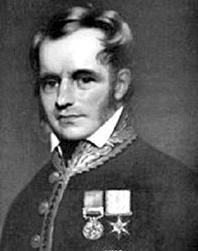
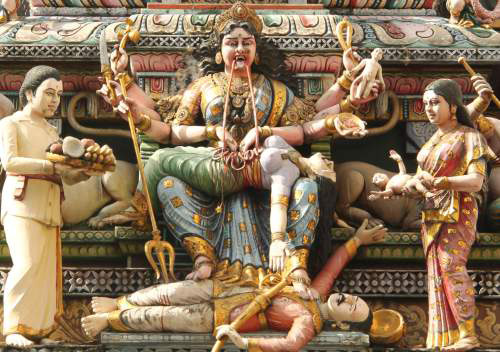
![Byam Shaw [Public domain], via Wikimedia Commons](http://reflectionsofindia.files.wordpress.com/2014/07/the_adventures_of_akbar_artillery.jpg?w=529)
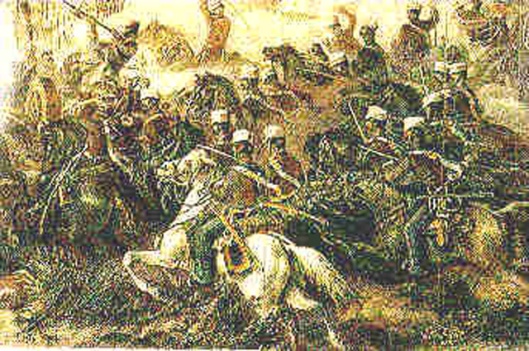
IMAGINATION IS POWER
ReplyDelete